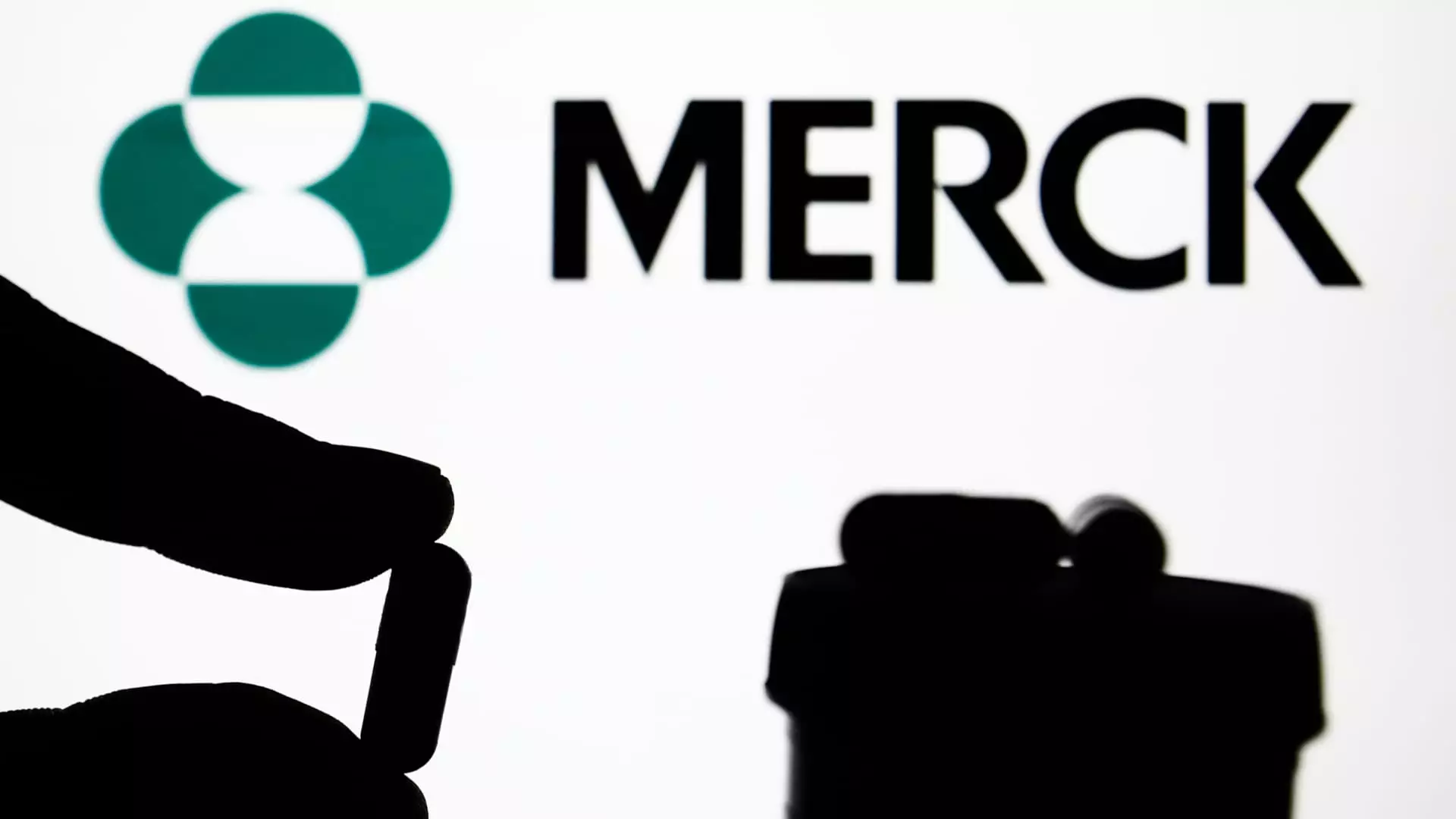Merck, a titan in the pharmaceutical landscape, has recently made headlines for unexpectedly slashing its profit forecast, attributing the jarring dip to estimated tariff costs that could reach $200 million. This sudden reevaluation reflects a volatile intersection of global trade tensions and internal operational expenses, painting a grim picture for stakeholders who have come to expect unwavering growth from one of the industry’s most robust players.
Financial Forecasts Shattered: The Numbers Speak
Merck now anticipates its adjusted earnings for 2025 to fall between $8.82 and $8.97 per share, a noticeable decline from its previous estimate of $8.88 to $9.03. The ripple effect of escalating tariffs—particularly those stemming from strained relations between the U.S. and China—has sent tremors through its financial outlook, a scenario that affects not just the bottom line but also the broader market sentiment regarding American-made pharmaceuticals. It’s a difficult pill to swallow for investors who often look to Merck as a stabilizing force in turbulent market conditions.
The avoidance of President Trump’s impending tariffs on imported pharmaceuticals looms large, contributing to an unpredictable climate for drugmakers. While the need for increased U.S. manufacturing is paramount, can Merck truly bolster its American footprint sufficiently without crippling its international operations? The answer might not be straightforward, and the company’s commitment to invest an additional $9 billion into U.S. production by 2028 shows they recognize the risks but might also indicate desperation in maintaining profitability.
Hunger for Innovation Amid Losses
Despite these troubling forecasts, Merck’s first-quarter results tell a more tempered story of resilience. The company reported earnings per share of $2.22—outpacing market expectations of $2.14—and revenues of $15.53 billion, which also surpassed estimates. This newfound vigor is being bolstered by Merck’s expanding oncology portfolio and the performance of its animal health division. The launch of new drugs, such as Winrevair and Capvaxive, is an optimistic development that might offset losses stemming from its flagship cancer treatment, Keytruda, which faces a ticking clock as exclusivity wanes in 2028.
However, stakeholders should remain cautiously optimistic. While pharmaceutical advancement is a testament to Merck’s innovation capabilities, the reliance on newer sales contributions also raises questions about sustainability. Can the company continuously innovate at the pace required to fill the financial vacuum left by an expiring product life cycle? This uncertainty leads analysts to tread water, as a single drug’s success or failure could turn the tide for Merck’s financial health.
The International Market: A Double-Edged Sword
The ongoing geopolitical strife between the U.S. and China is not merely a backdrop but a driving force influencing Merck’s operations. With China being a critical market—home to significant manufacturing and R&D—it’s alarming to see sales, specifically of the cervical cancer vaccine Gardasil, wane due to retaliatory tariffs that have led to a staggering 41% decline in sales. The halted shipments of Gardasil, lasting through mid-2025, might serve as a stark reminder that reliance on international markets carries inherent risks that could tip the delicate balance of profitability.
Simply put, Merck stands at a crossroads, grappling with the implications of long-standing trade disputes. The data suggests a potential supply crunch of essential drugs for Chinese patients, presenting not just a hiccup for Merck’s financial forecast but a moral quandary. This serves to illuminate the broader issue of how corporate profits can sometimes conflict with global health needs. Can Merck navigate these turbulent waters without sacrificing ethical obligations to provide lifesaving medications?
Animal Health Division: A Unexpected Bright Spot
Amid the tumult, Merck’s animal health division has emerged as a surprising stronghold, demonstrating a 5% increase in sales, which amounted to almost $1.59 billion. Driven by heightened demand for livestock products and the integration of acquired businesses, this division not only anticipates growth but could also serve as a buffer in lean times. While human health is always the primary focus, it’s worth considering that without a solid footing in animal health, Merck might find itself more precarious on its other fronts.
The surge in animal health revenue outlines the necessity for pharmaceutical companies to diversify their offerings in unpredictable environments. Merck’s bolstered animal division illustrates adaptability; however, it also begs the question—are they mitigating risks across the board or merely prolonging an inevitable reckoning in the human pharma business?
With Merck’s multifaceted challenges underscored by current events, the coming months will be pivotal. The firm’s ability to balance innovation, navigate tariff-induced turbulence, and address constant consumer demands may very well determine the path forward for one of America’s premier pharmaceutical giants.

